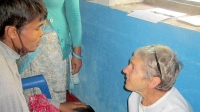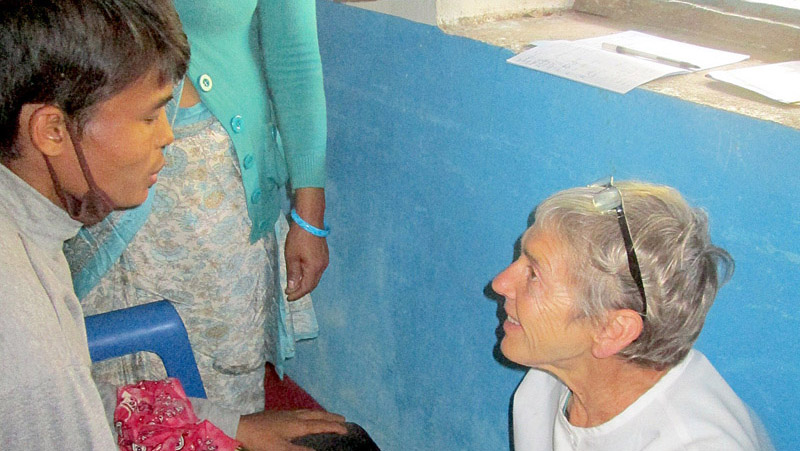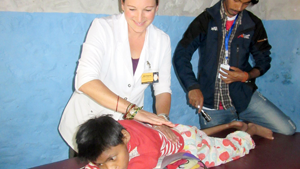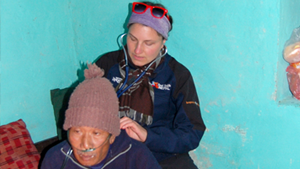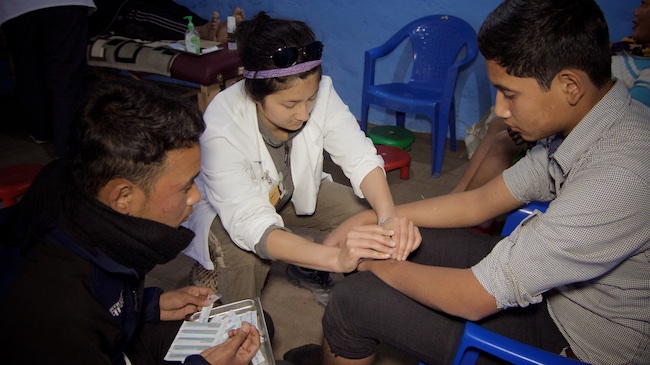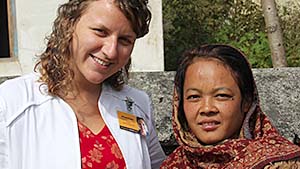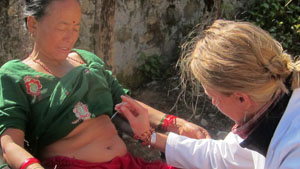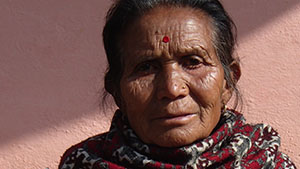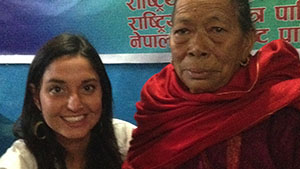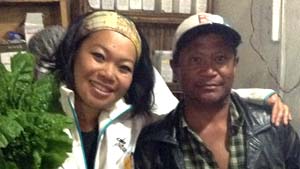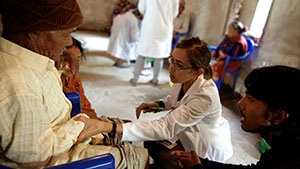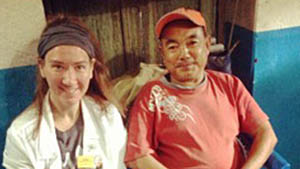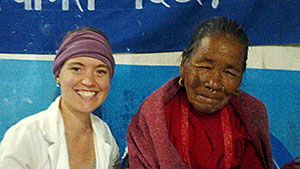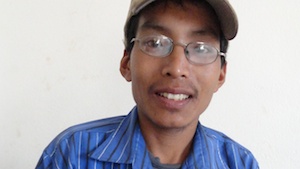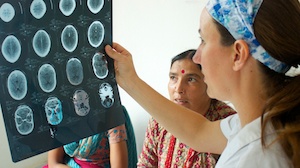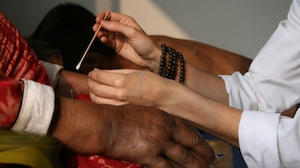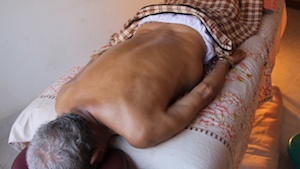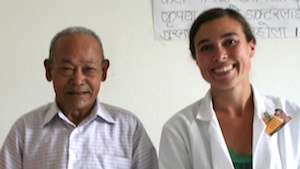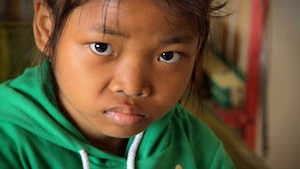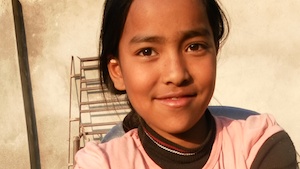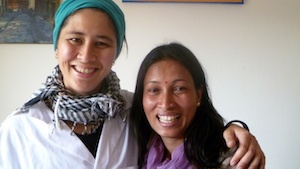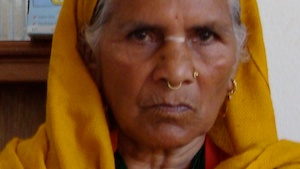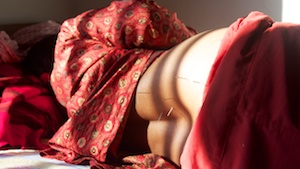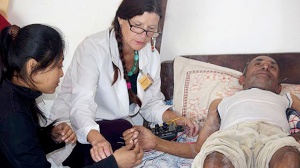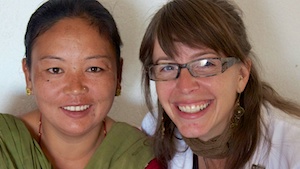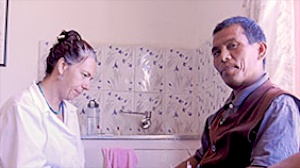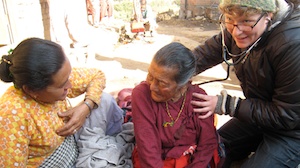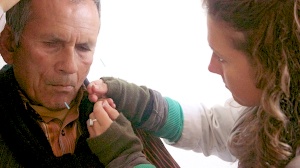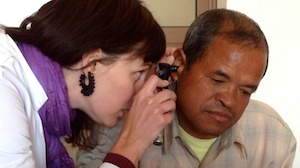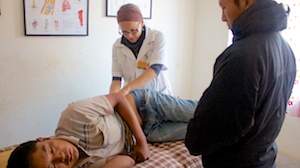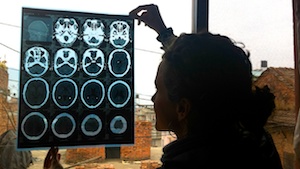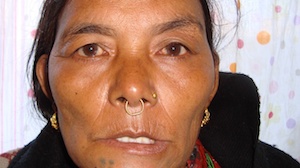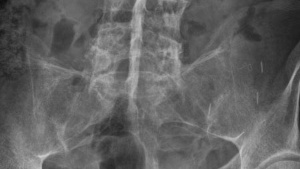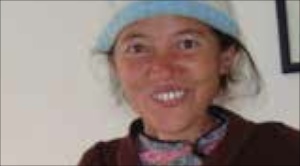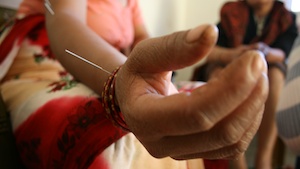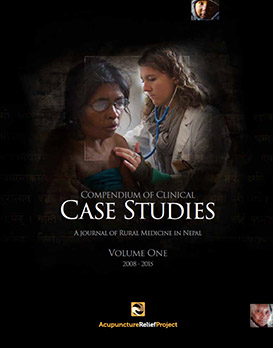Asiya Mahdiyah Shoot, LAc, MSA
December 2013
OVERVIEW
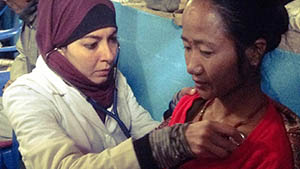 30-year-old female presents with lower abdominal pain, burning urination and shortness of breath for the last 5 months. With the discovery and treatment of a parasitic infection, and with concurrent treatment of a urinary tract infection, the patient found significant relief.
30-year-old female presents with lower abdominal pain, burning urination and shortness of breath for the last 5 months. With the discovery and treatment of a parasitic infection, and with concurrent treatment of a urinary tract infection, the patient found significant relief.
SUBJECTIVE
Patient presents with achy, burning lower abdominal pain with burning urination for 5 months. The burning is daily and constant at a moderate level intensity. It is worse during the night and during her menses, which is regular at 28 days. Menstrual flow is heavy, lasting 6 to 7 days. It is dark in color with some clots. She reports dysmenorrhea with burning pain and cramping in the lower abdomen and back, persisting all 7 days of her cycle. The patient also reports 5 months of burning urination that is scanty, dark yellow and cloudy with a sense of burning and achiness in her urethra. She experiences a sense of urgency and urinates 10 to 15 times a day. Furthermore, she reports loose, yellow-colored stools containing mucus starting 3 months ago. She has a bowel movement 3 times a day. She denies visible blood in the stool and reports no burning sensation of the anus.
Patient reports shortness of breath (SOB) for 1 year, which occurs when walking, and is worse at night while lying down. Symptoms have been worsening for the last 4 months with occasional tightness in her throat, wheezing, sore throat and cough, all of which are worse at night.
She reports feeling tired, having poor memory, night sweats and being irritable and anxious, with difficulty falling asleep.
5 years ago, she had a dilation and curettage (D&C) procedure due to a miscarriage. She has 2 children and is not currently pregnant. She denies any vaginal discharge or rash.
OBJECTIVE
The patient appears to be in average constitutional health for her age and environment, but appears fatigued and weak as though she is fighting off a pathogen. She is somewhat thin, and often slouched in the chair under a draped shall. Although her face is somewhat pale, she has flushed, red cheeks and mild, red-tinged eyes. Her palms are damp to the touch. She speaks with a weak voice, and is mentally sluggish, though has many complaints and concerns about her health. She also has a dry cough heard during her treatment visits.
On palpation, the patient is tender and timid. She reports moderate pain that is achy in nature when applying deep pressure to the low abdomen. There is also moderate pain with moderate depth pressure to the mid-abdomen. No tenderness in upper quadrants. Moderate pain on strong percussion of her low back.
No significant findings on auscultation of bowels. Minor wheezing in both upper lobes of the lungs upon auscultation. Vital signs include: Temperature of 98.8°F, oxygen saturation of 98% as measured by fingertip oximeter, and a resting pulse rate of 78bpm.
Her tongue is pale, with red sides and tip. It is fissured, with a thin white coat. Pulses are thin, wiry, a little rapid and slippery
LAB RESULTS
Urinalysis Panel:
Pus cells (2-4 HPF) and “plenty” of epithelial cells; Dark yellow color;
Slightly turbid appearance and acidic pH; Trace albumin; Blood, ketone, bile and glucose are not seen.
Blood Panel:
Hemoglobin 12.0 gm/dL = low range (normal female range is 12.1 - 15.1 gm/dL)
Total leucocyte count: 11,800 cu.mm (normal is 4,00-11,00 cu.mm) = little high
Neutrophils 75% (normal 40-70%) = little high
Monocytes 00% (normal 002-10) = little low
Lymphocytes and eosinophils are in normal range.
Stool Panel:
Most significant finding is presence of ascaris lumbricoide ova (roundworms) along with red blood cells (2-5 HPF).
ASSESSMENT
DX: Urinary tract infection (cystitis); Roundworm infection; Possibility of Kidney infection due to duration, as well as possible infection or inflammation in the uterus. However, low temperature and medium pain upon palpation of low abdomen and back rule out significant infections.
Secondary complaint of dyspnea (SOB)
Explanation: Pus cells (pyuria) in urine indicate some type of infection in the urinary tract. More accurate diagnosis of a UTI requires nitrites to be found in the urine sample. 95% of UTI’s occur when bacteria ascend the urethra to the bladder. The most common bacteria is gram-negative strains of e.coli. In addition, increased white blood cells in the blood lab, specifically high neutrophils and low monocytes, indicate a mild bacterial infection. Hemoglobin levels, being on the low end, is probably due to anemia and malnutrition based on patient’s environment and parasitic infection.
Roundworms are a nematode (non-segmented cylindric worm that ranges from 1mm to 1m in length). They are a helminth parasite (compromising hosts nutritional status) that are transmitted fecalorally when contaminated plants (or soil) with the eggs on them are consumed.
TCM DX: Damp-heat in lower jiao (body): Lower abdominal burning, and burning urination, that is dark yellow and cloudy
LV/KD yin deficiency: Chronic sore and dry throat, knee and low back pain, night sweats, five center heat, feverish, thirsty, dizzy, irritable, insomnia, burning, itchy eyes, blurry vision, burning worse at night
SP/LU qi deficiency: Loose stools, gas, bloating, lack of appetite, fatigue, gastritis, dyspnea, coughing, wheezing
Qi and blood stagnation as indicated by menses
PROGNOSIS
Cure of burning urination and burning low abdomen is highly probable within 2 months, with proper conjunctive care, including acupuncture, internal Chinese herbs and Western medications (antibiotics). Typically, acute bladder infections and parasitic infections are resolved within 48 hours after the onset of medication.
Chronic UTI’s may take up to 1 month to resolve. The SOB is expected to improve 80% within 3 months.
INITIAL PLAN
Treat with acupuncture 2 times per week for 2 weeks. Reassess in 1 week to assess patient’s progress after taking parasite medication. If burning urination is not resolved, administer antibiotic medication. In addition, sanitation and hygiene is discussed with the patient, along with recommendation to increase water intake, consume cucumber juice and accessible antibiotics in diet such as raw garlic, to decrease the burning urine.
Acupuncture: Focus on points to clear heat and remove toxins, especially from the lower jiao, nourish yin and blood, Lungs, Spleen and Stomach.
Common points used: LI11, LI4, LV3, KD6, LU7, SP4, SP6, ST36, CV3, CV4, CV14
Alternative points: LV2, KD2, KD3, SP10, KD10, UB13, LU9, CV6, CV12, P6, HT6, TB6, SP8, Zigong
Chinese herbs: Huang Lian Jie Du Tang 3TID for 2 weeks to clear internal heat, then Dang Gui Liu Huang Tang 3 TID to clear yin deficiency heat
Allopathic medicine: Albendazole (400mg PO once) is administered for roundworms. Ibuprofen (400mg TID) is given for 5 days upon first visit.
Subjective: 9 days after initial visit, the patient reports her stools being less yellow and more formed. She is still experiencing burning urination with burning pain into her urethra, but reports a 20% reduction in symptoms with treatment. She urinates 8 times per day and 3 times per night.
UPDATED PLAN
Acupuncture treatment 2 times per week for 2 weeks to clear UTI and decrease lower abdominal pain.
Trimethoprim/sulfamethoxazole (160/800 mg PO BID) for 10 days is given for UTI. This medication is later extended an additional 4 days due to unresolved symptoms.
Stool and urine to be retested in 1 week.
OUTCOME
19 days after initial visit, the patient reported her stools being formed, 2 times a day, and no longer yellow. The burning in the low abdomen was still daily, but less at night and had decreased in intensity by 70%. She was able to tolerate deep-level palpation to her low abdomen with mild tenderness. The burning urine was 50% less, but still bothersome, with burning pain into the urethra. She was urinating 5 times per day and 3 times at night. Her temperature was 98.5°F. She visibly looked more energized with less redness in her eyes.
The patient reported it being easier to breath and coughing less. She still experienced minor wheezing, heard upon auscultation, but it was less oppressive.
There was also less gastric pain in the mid-abdomen, and only mild tenderness upon deep palpation. Her night sweats and sore throat were also less frequent.
A follow-up stool panel indicated that the helminthic (roundworm parasite) ova and microscopic blood was no longer present.
Urine lab showed pus cells at 3-5 HPF and epithelial cells at 4-8 HPF. Color was light yellow, appearance still slightly turbid, pH acidic and with trace levels of albumin.
CONCLUSION AND FUTURE PLAN
This is a case where the patient was reporting a multitude of health complaints that seemed unrelated, and complex. This was compounded by her reluctance to report significant details about her health history. On previous visits to this clinic, practitioners focused on her knee pain and burning itchy eyes, which was mostly resolved by the time I saw her. Her burning lower abdomen and urination was listed among her secondary complaints, but was not found to be significant. This case shows the importance of discerning between signs and symptoms, providing integrative care, and trusting one’s instinct to direct proper care and plan-of-action, including the ordering of proper lab panels. This treatment approach exposed and properly treated the roundworm infection.
Thus far, this patient successfully experienced reduction in burning urination, burning low abdomen pain, and a host of other conditions, including SOB. The SOB was likely due to roundworm infection since the larvae move via the bloodstream to the lungs where they are coughed up, swallowed, and travel back to the small intestines where they mature into adult roundworms. Common symptoms of roundworm infection include coughing, shortness of breath and wheezing. If not resolved in the next month, a proper assessment of asthma needs to be done, and possible administration of asthma medications (bronchodilators beta 2-agonists, anti-cholinergics or corticosteroid etc.) may be needed.
The increased number of pus cells in her second urine test indicated that a urinary tract infection was persisting. Trimethoprim/ sulfamethoxazole (160/800 mg PO BID) was extended to 14 days.
If the burning abdominal pain and urination is not resolved within 2 weeks, a stronger antibiotic may be needed. Other causes of pus cells in the urine should be considered, including sexually transmitted diseases, kidney stones, other infectious pathogens such as candida, or even tuberculosis in the urinary tract. Though not likely, cancer must also be considered. Her temperature should be monitored. It may also be necessary to order a gynecological examination to rule out infection, inflammation or scarring caused by the D&C.
Acupuncture and herbal treatments should be continued into the future, 2 times a week for 10 weeks, with focus on tonification and to move qi/blood in the lower jiao. Probiotics, iron supplement and a multivitamin with B-complex should be considered. In 3 months, the patient should be checked again for roundworm eggs. If the case is not resolved within this 10 week period, she should be referred for an ultrasound or CT scan to examine her kidneys and ovaries.


